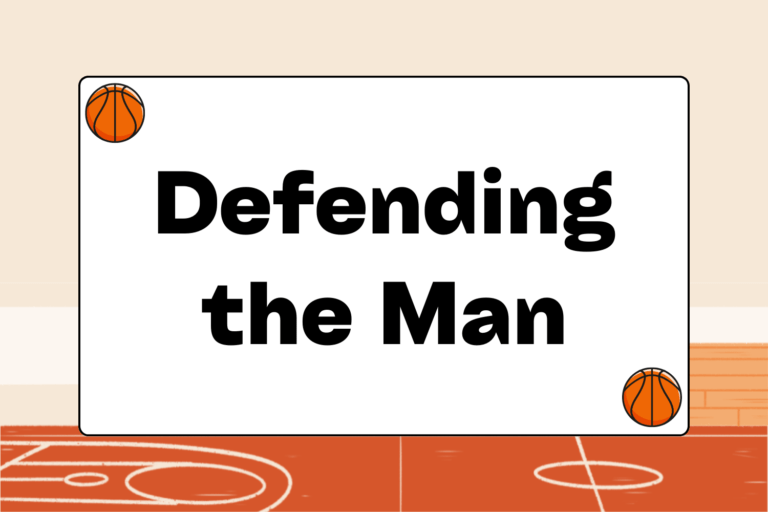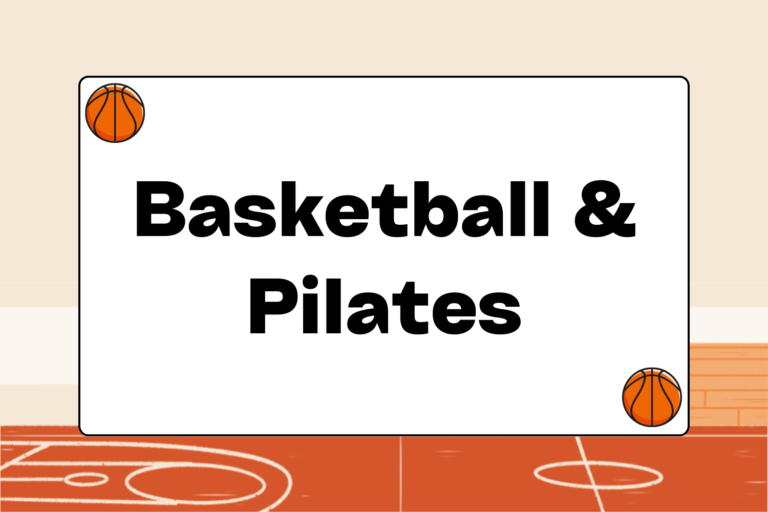The safest and most basic pass in basketball is a crisp, sharp chest pass. Chest passes are essential for keeping teammates involved and getting an offense moving toward the basket. The chest pass is the fastest of all passing techniques and allows the target to receive the pass in the best possible position to make the next move. However, it’s easier to steal than any other type of pass.
If you’re undersized or you’re still physically developing, using the right technique allows you to fire a clean pass to an open target in fluid motion. This should be practiced repeatedly until you master the movement.
The Chest Pass Technique
Begin with the ball close to your chest and your body in the triple-threat position. This means that your feet are shoulder-width apart and your knees are slightly bent.
- Place your dominant hand on top of the ball and your off hand to the side. The ball should be close to your chest as your prepare to pass the ball. It’s important to grip the ball with your fingertips and to have your fingers evenly spread apart. Elbows should be tucked into your body.
- Take a step in the direction of the target, pushing off with your other foot to generate momentum. Generally, a good chest pass is delivered by stepping with your dominant foot. If you’re right-handed, you’ll usually step forward with your right foot. However, it’s important to be able to deliver a clean chest pass by stepping forward with either foot.
- Extend your arms fully and pass the ball. As you extend your arms, follow through by thrusting your arms and snapping your wrists. Your hands will end up with your pinkies pointing upward and your thumbs pointing downward. The backs of your hands should be facing each other.
Hot Tip: Follow Through
If you’re having trouble getting enough power into your chest pass, remember that the power comes from your fingers. Snap your wrists and concentrate on following through with your fingers, using your dominant hand to generate the most power.
Aim for Your Teammate’s Chest
The chest pass should always be delivered accurately. This can only happen by practicing the triple-threat position and following through correctly. A good chest pass hits the target right in the chest every time, so that he can quickly make a move with the ball after receiving the pass.
It’s also important to lead the target when he’s on the move. The biggest advantage of the chest pass is the ability to deliver it on target. When a player’s moving, he should always be able to catch a chest pass in stride and continue moving.
Chest Passing Drill
Start by having players line up in two lines 15 feet apart at one baseline, facing each other beneath the basket. While continuing to face each other, the first two players in line shuffle the length of the court, firing chest passes to each other in stride. Players should catch and pass immediately, firing two-handed chest passes only. Cones set up 15 feet apart and spaced out along the court let players concentrate on the pass and make sure they stay far enough apart.
Passes should lead the receiver so that he never has to break stride. Players should catch each pass mid-stride, put one foot down, and fire a pass back to his teammate. The final pass on the opposite end of the court should lead to a lay-up. Players line up again along the baseline and repeat in the opposite direction.
Mental Edge
Practice making passes with a five-pound medicine ball to help players develop the necessary strength in their wrists and forearms for an explosive pass.
Practice Alone or with a Teammate
Practice firing chest passes against a wall to master the right form. Concentrate on stepping into your pass and making accurate, strong passes.
Fire 25 passes from a short distance, then take four steps back and repeat. If you practice regularly, you should be able to make accurate chest passes from forty feet away or longer (close to the same distance as half court). Alternate sets by stepping into the pass with either foot.
Firing chest passes to teammates is also a great way to begin practice or workouts. It helps loosen up your back and arms, and invigorates some of the same muscles you’ll use when shooting baskets.
“Michael, if you can’t pass, you can’t play.”
Dean Smith, to Michael Jordan
Hall of Fame NCAA Basketball Coach
Fundamentals of the Game
The chest pass is one of the most fundamental skills in basketball. It’s easy for players to forget the basic skills that lead to winning basketball games, but coaches always remember to emphasize fundamentals. For that reason, working on accurate, strong chest passing can endear you to your coaches, and remind them of how you can help the team win games.





